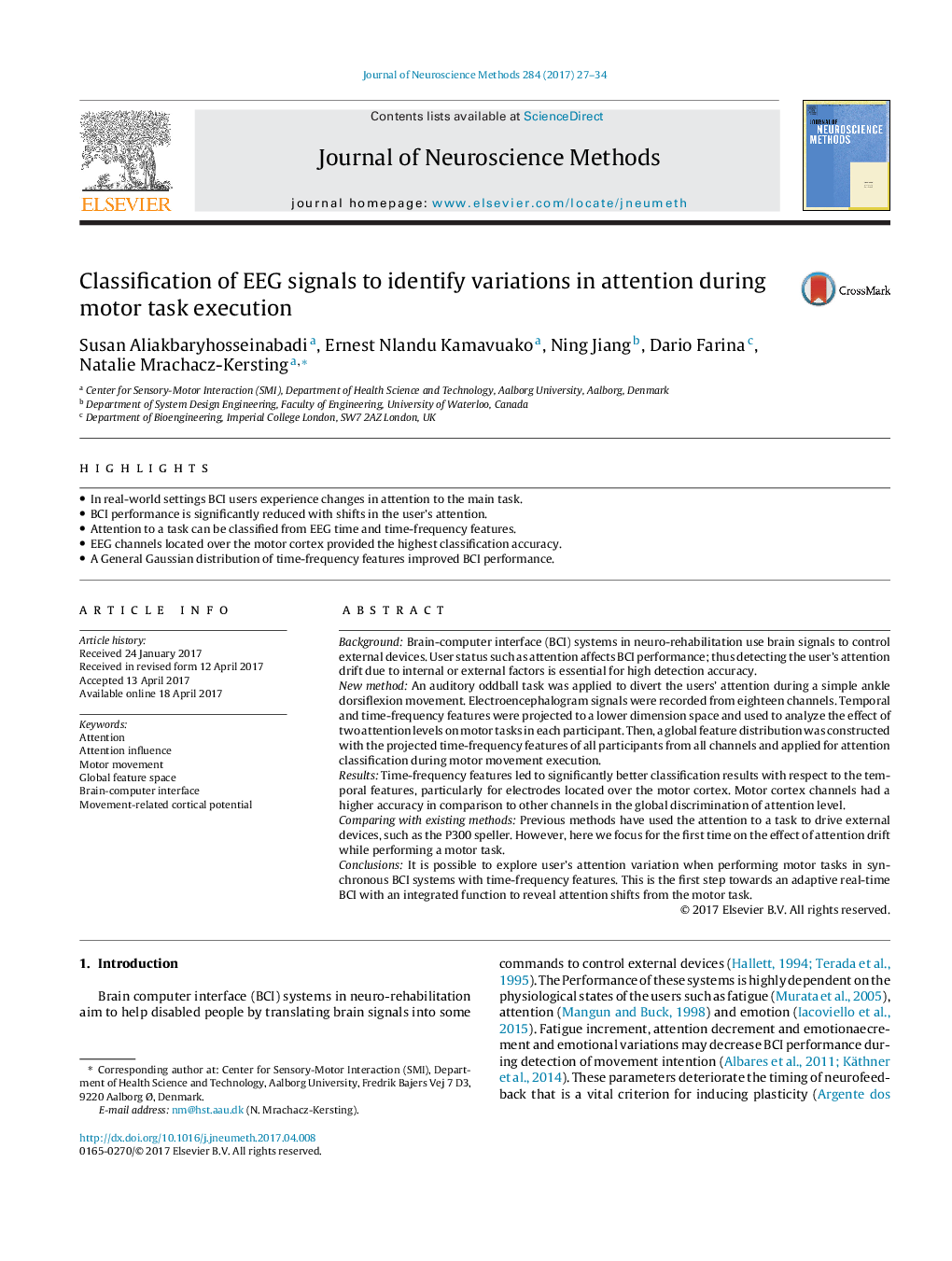| کد مقاله | کد نشریه | سال انتشار | مقاله انگلیسی | نسخه تمام متن |
|---|---|---|---|---|
| 5737239 | 1614585 | 2017 | 8 صفحه PDF | دانلود رایگان |

- In real-world settings BCI users experience changes in attention to the main task.
- BCI performance is significantly reduced with shifts in the user's attention.
- Attention to a task can be classified from EEG time and time-frequency features.
- EEG channels located over the motor cortex provided the highest classification accuracy.
- A General Gaussian distribution of time-frequency features improved BCI performance.
BackgroundBrain-computer interface (BCI) systems in neuro-rehabilitation use brain signals to control external devices. User status such as attention affects BCI performance; thus detecting the user's attention drift due to internal or external factors is essential for high detection accuracy.New methodAn auditory oddball task was applied to divert the users' attention during a simple ankle dorsiflexion movement. Electroencephalogram signals were recorded from eighteen channels. Temporal and time-frequency features were projected to a lower dimension space and used to analyze the effect of two attention levels on motor tasks in each participant. Then, a global feature distribution was constructed with the projected time-frequency features of all participants from all channels and applied for attention classification during motor movement execution.ResultsTime-frequency features led to significantly better classification results with respect to the temporal features, particularly for electrodes located over the motor cortex. Motor cortex channels had a higher accuracy in comparison to other channels in the global discrimination of attention level.Comparing with existing methodsPrevious methods have used the attention to a task to drive external devices, such as the P300 speller. However, here we focus for the first time on the effect of attention drift while performing a motor task.ConclusionsIt is possible to explore user's attention variation when performing motor tasks in synchronous BCI systems with time-frequency features. This is the first step towards an adaptive real-time BCI with an integrated function to reveal attention shifts from the motor task.
Journal: Journal of Neuroscience Methods - Volume 284, 1 June 2017, Pages 27-34